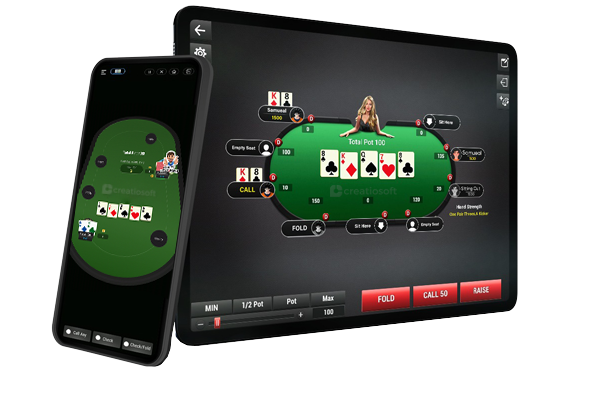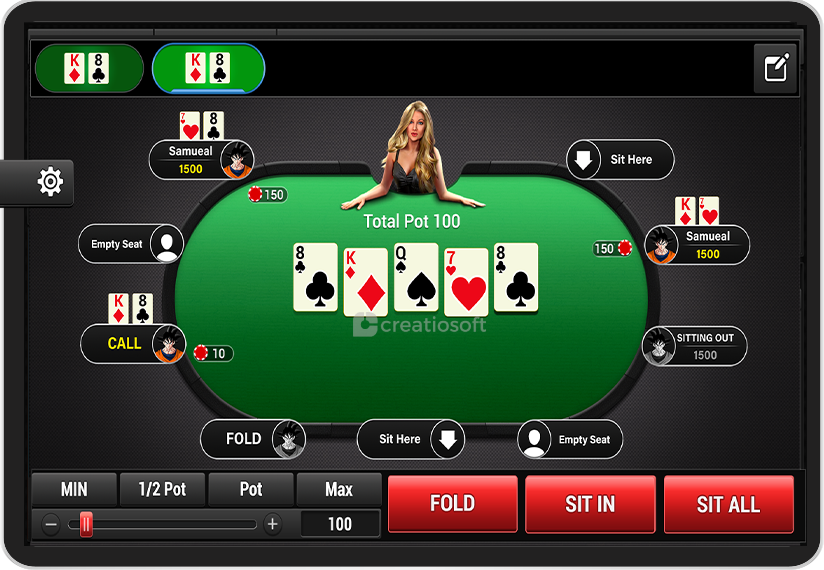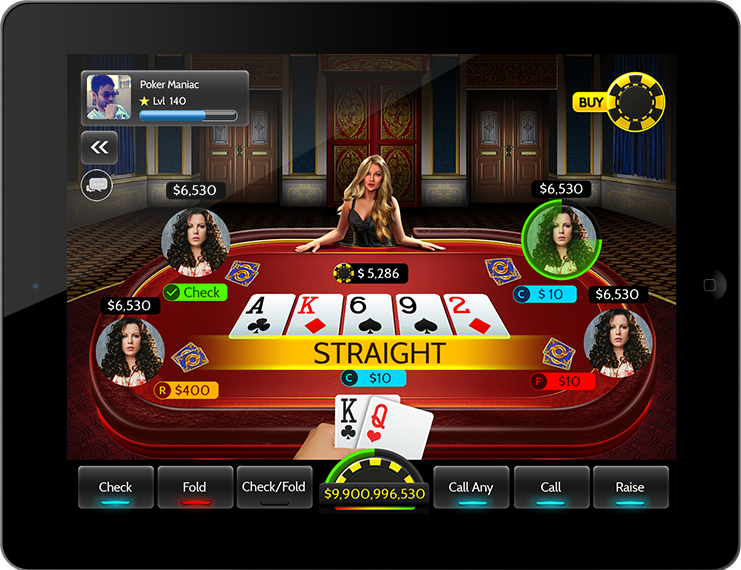Developing a poker game may be an entertaining and challenging task for a poker game development company. It takes a mix of imagination, technological know-how, and attention to detail to construct a poker game, from creating the game rules to deploying the finished product.
Developing a poker game is divided into various stages, including conceptualizing, developing the game mechanics, designing the user interface and user experience, testing and debugging, and deploying the game. Game creators must make key decisions at each step that will influence the game’s success and revenue.
This blog will walk you through the process of building a poker game, from concept to deployment, and provide you with the information and resources you need to succeed.
Poker Game Development And Its Challenges :
Poker game development:
Developing a successful poker game requires meticulous attention to detail and a thorough grasp of the game mechanics. A great poker game must embody the fundamental components of the game. It must also give a unique experience from conception through deployment. The application of design, engineering, and game development skills accomplishes this.
The poker game development process begins with a polished notion and is tested through prototyping. This enables the producers to design a fun and engaging game without losing game integrity. Once the design is complete, the engineering team may begin developing the game. This includes developing the actual game mechanics, handling data, and ensuring the game works across all platforms.
Challenges Faced During Poker Game Development:
A successful Poker game development is a difficult task that needs to overcome various obstacles along the road. One of the problems is the game’s design, which must be aesthetically appealing and user-friendly for players to have an intuitive experience.
Another problem is correctly implementing poker rules, which require complicated mathematical computations and decision-making. It is critical to ensure a fair distribution of cards and dealing, which necessitates using an accurate random number generator technique. Because online poker games are subject to hackers and cheating, securing the game from cheaters and maintaining fair play is critical.
Integrating the game with payment gateways, chat systems, and other gaming platforms is a difficult procedure requiring technological skill. Balancing the game’s difficulty level and keeping a seamless flow of the game without interruptions is a problem for the user experience. Testing and debugging the game takes time to guarantee that it works properly and without bugs.
Finally, guaranteeing compliance with local laws and regulations governing internet gaming is a difficulty that must be addressed. To summarise, developing a good Poker game necessitates overcoming these obstacles via careful preparation and execution.
Steps Involved In Poker Game Development:
Poker Game Development aims to give players an enjoyable and engaging gaming experience. It replicates the thrill and challenges of playing live poker.
Here is a rundown of the steps in creating a poker game:
Conceptualization:
It is the initial step of development. This step aids in deciding on the game’s regulations, the types of poker hands to be featured, the number of players, and the betting structure. Conceptualization aims to generate a concise and straightforward definition of the game. This will serve as the foundation for the remaining development process.
In poker game creation, conceptualization also includes:
- Analyzing current games.
- Assessing the target demographic.
- Designating what makes the game distinctive and exciting to players.
Establishing Game rules for poker game development:
Setting the rules of a poker game is an essential step in poker game development. The rules govern the game, including how hands are graded and bets are put. Hand rankings, blinds, antes, showdown, dealing, and betting are some essential rules to consider when developing poker games.
You can modify or add rules as desired, but make sure to keep the game fair and enjoyable for all players.
Choose the suitable Game engines and tools:
Poker game development can be a smoother process with the right game engine and tools. To have the best possible experience, you should learn about the various gaming engines and accessible tools. After that, you can choose the game engine that meets your requirements.
Here Are Some Game Engines And Tools For Creating A Poker Game:
● Unity:
Unity is a popular game engine that develops 2D and 3D games for various platforms. These include Windows, iOS, and Android. It has a user-friendly design, a strong development community, and various tools and tutorials.
● Unreal Engine:
Unreal Engine is a robust game engine used to generate high-quality 3D games. It has excellent visuals, physics capabilities, and compatibility with numerous platforms.
● Cocos Creator:
Cocos Creator is a gaming engine that is mainly developed for 2D games. It has an easy-to-use interface, a vast resource library, and compatibility with numerous platforms.
● Construct:
Construct is a 2D game engine with a drag-and-drop interface. It is simple to use and great for new game producers.
Apart from game engines, various tools may be utilized to aid in the building of a poker game. A few of them are:
● Adobe Photoshop:
Adobe Photoshop is a professional image editing program used to develop game visuals.
● Blender:
Blender is a 3D graphics software used to build game elements and animations.
● Microsoft Visual Studio:
Visual Studio is an integrated development environment (IDE) for writing code and debugging games.
Eventually, the best tools and engines will be determined by the unique needs of your poker game, such as its platform, visuals, and functionality. Consider your requirements and investigate each tool or Engine to determine the most incredible fit for your game.
Importance of Database:
A database holds player profiles, game histories, and leaderboards. The database also stores game state information, such as the current hand, each player’s chips, and the current pot.
Various databases are used in game creation, including relational databases, NoSQL databases, and graph databases. The database used will be determined by the game’s unique requirements and the data that has to be kept. Because the database is such a crucial part of poker game development, it must be scalable, efficient, and simple to administer. The database should also be secure to protect critical information and prevent cheating.
Apart from storing data, the database may be used to do analytics on the data to acquire insights into player behaviour and improve the overall user experience. A well-designed database may give valuable insights about the game and help drive future enhancements and optimizations.
Need for Game security:
Game security is an essential component of poker game development. It contributes to the game’s integrity by preventing cheating and hacking. Players demand a fair and safe experience in an online gaming environment. The breach of game security can lead to losing faith in the game and its makers.
Protecting player information: Game security is important for protecting sensitive player information, such as login credentials, financial information, and personal data. This helps to prevent identity theft and other malicious activities.
Designing the game’s UI and UX:
The design of a poker game’s user interface (UI) and user experience (UX) are critical components of the development process as they significantly impact the player’s experience.
Here are some pointers for creating a poker game’s UI and UX:
● Simple UI/UX:
A poker game usually entails a lot of information. It is critical to maintain the user interface clear and easy to use. Avoid extraneous features and make sure crucial information is easily seen. The UX should also be user-friendly, with clear instructions and, if necessary, a tutorial.
● Intuitive UI/UX:
The user interface (UI) should be straightforward and self-explanatory. By doing this, players can comprehend how to play the game. Use simple and concise labeling, and consider employing visual cues to direct the player’s attention. The user experience should also be smooth and entertaining, with no performance difficulties or other hurdles to entry.
● Use clear typography:
Use a clean, readable font for the text in the UI. Make sure the content is strong enough to be visible, and use a typeface that is easy to read on screen.
● Use appropriate colors:
Colors for the UI should be appropriate for the game’s theme and simple to view. Consider employing a limited color palette to keep the UI simple and uncomplicated.
● Consider animations and sound effects:
Try adding animations and sound effects to the UI to improve the player’s experience. However, make sure they are not too intrusive or overbearing.
● Create a sense of progression:
Players should feel like they are gaining progress while they play the game. Consider adding levels, achievements, or other prizes to keep the player interested.
● Provide a sense of community:
Consider introducing social aspects to the game, such as the option to play with friends or compete against other people. This can foster a feeling of community and enhance the entire experience.
● Make it visually appealing:
The game should be aesthetically pleasing, with clear and appealing visuals and animations. Consider the game’s overall look and ensure that it is consistent throughout.
● Optimize for performance:
Check that the game works smoothly and effectively without latency or other performance concerns. Consider the game’s hardware requirements and optimize them for the target platform.
Creating a decent UI and UX is critical to creating a successful poker game. Take the time to examine the player’s experience and make any required modifications. It guarantees that the game is entertaining and exciting for the players.
Implementing Game Mechanics:
Implementing game mechanics is an essential phase in the development process. It defines the player’s experience and influences the game’s quality. A well-implemented game mechanics system is vital for generating an exciting and entertaining player experience.
Implementing game mechanics involves taking the game concept and producing functioning code in a game engine that fulfills that design. It includes handling player movement, opponent AI, item pickups, and other gameplay-essential features.
Implementing poker game mechanics would entail coding the game mechanics, such as dealing cards, betting, deciding the winner, and implementing the game logic that governs how the game is played. It also entails building the UI and UX components with which the player interacts, such as the card and chip images, the betting interface, and any animations or sound effects that enhance the player’s experience.
Logic Testing and Debugging:
Logic testing and debugging are used to check that game mechanism such as hand rankings, betting rounds, and multiplayer interactions work as intended. It also corrects any errors or defects that may appear with time.
It detects and resolves issues in the game’s code. This helps to keep bugs from spreading across the game. Identifying and correcting problems, logic testing, and debugging help to enhance game quality. Furthermore, it aids in avoiding player dissatisfaction by ensuring that the game mechanisms work as planned.
Logically testing and debugging are critical steps in poker game development, ensuring its functioning, quality, and player happiness.
Deployment and maintenance:
Deployment and maintenance are two critical parts of poker game creation. They contribute to a high-quality user experience and keep the game relevant and available to gamers. Poker game developers may set a solid foundation for their game’s success and generate a devoted user base by investing in these areas.
The process of making the game available to players in the chosen platform is known as deployment. Testing the deployment on multiple systems, delivering the game to various platforms, and monitoring the game for any issues or bugs are all part of this process. The deployment process’s purpose is to make the game available to players in a high-quality, reliable, and accessible format.Deploying a poker game is essential to its success since it is the first opportunity for players to sample the game and offer feedback. As a result, it is critical for game creators to properly plan and execute the launch, including marketing the game, doing comprehensive testing and debugging. Developers must also be prepared to respond to any difficulties or defects.
Maintenance is the continuing assistance and upkeep of the game after it has been released. This involves correcting any problems or difficulties that emerge, updating the game with new features and upgrades, and providing technical help to players. Maintenance aims to ensure the game’s continuous success and keep it up to date with the current technology and user expectations.
 Monetization strategies:
Monetization strategies:
Monetization tactics aid in the income generation of the poker game. To establish monetization techniques, poker software providers must carefully analyze the numerous alternatives and select the most suited strategy for their game.
Monetization techniques include various practices, such as selling the game, making in-game purchases, displaying commercials, or selling virtual items.
The monetization technique used will be determined by the sort of game being developed, the intended audience, and the game developer’s aims. For example, a free-to-play game may rely primarily on in-app purchases and advertising, whereas a premium game may rely more on a one-time purchase price.
Whatever technique is adopted, the purpose of monetization is to establish a regular currency stream that will allow the game developer to continue supporting and improving the game.
Final Thoughts:
Building a poker game may be difficult and time-consuming, but it can also be quite profitable with the appropriate strategy. Building a poker game may be difficult and time-consuming, but it can also be quite profitable with the appropriate strategy.
To produce a high-quality and interesting game, every step must be meticulously planned and performed. It includes conceptualizing the game, developing the mechanics, designing the user interface, and testing and debugging.
Once the game has been deployed, it is critical to monitor its performance and make any required modifications. This might involve correcting issues, introducing new features, and modifying revenue techniques based on user input.
To summarise, developing a poker game is a multi-stage process involving technical abilities, creativity, and commercial savvy. Game developers may produce a successful and profitable poker game that will interest and delight players for years by following best practices and concentrating on the essential game creation features.















